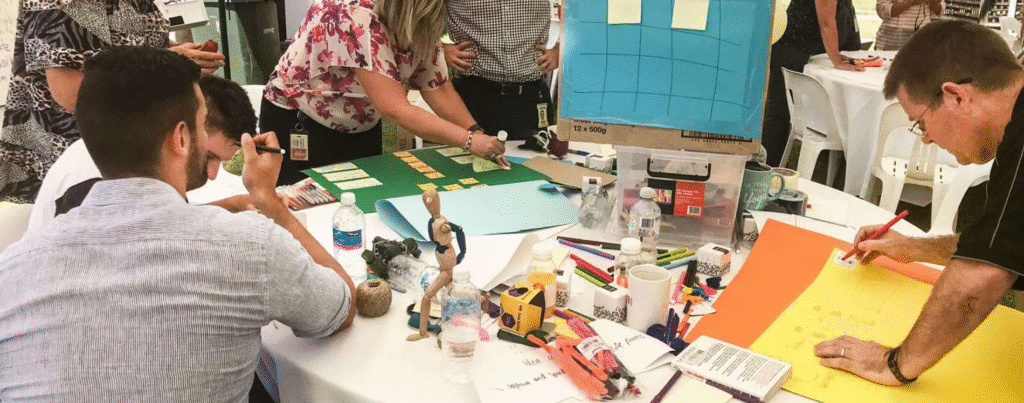In a world where change happens fast, innovation is a must for staying ahead. A Design Thinking Workshop gives individuals and teams the mindset, tools, and confidence to approach problems in fresh and effective ways. By focusing on real user needs and encouraging creative exploration, these workshops unlock solutions that make a genuine impact.
What Design Thinking Means
Design Thinking is a practical, people-focused method for solving problems. It moves beyond quick fixes, encouraging participants to fully understand the people they’re designing for before working on solutions. By blending analytical thinking with creativity, it helps generate ideas that are both original and relevant.
The approach is often structured into five key stages:
- Empathize – Learn about users by stepping into their shoes.
- Define – Turn insights into a clear, focused problem statement.
- Ideate – Brainstorm a wide range of ideas without holding back.
- Prototype – Build quick, low-cost versions of ideas to explore possibilities.
- Test – Share prototypes, gather feedback, and make improvements.
These steps are flexible, with room to loop back as new insights arise.
Why Experience a Design Thinking Workshop?
Reading about Design Thinking is one thing — experiencing it is another. A workshop allows participants to learn by doing, working on real challenges in an interactive, collaborative setting.
Some of the main advantages include:
- Hands-On Practice – Apply the process in a real-time environment.
- Team Collaboration – Break down barriers between departments and roles.
- Focus on the User – Ensure every solution is grounded in real needs.
- Boosted Innovation Skills – Gain the confidence to explore bold ideas.
How a Design Thinking Workshop Flows
A well-run session guides participants through the stages of Design Thinking while keeping creativity and energy high.
1. Setting the Tone
The facilitator introduces the method, encourages open communication, and creates a safe space for idea sharing.
2. Building Empathy
Participants use tools like interviews, journey mapping, or observation to better understand the user’s world.
3. Defining the Problem
Insights are turned into a problem statement that focuses on user needs rather than business assumptions.
4. Ideation Sessions
Brainstorming activities encourage participants to think beyond obvious solutions and explore new angles.
5. Prototyping Ideas
Quick models — from sketches to physical mock-ups — are built to bring concepts to life.
6. Testing and Iteration
Feedback is collected and used to refine solutions, ensuring they’re practical and effective.
Who Gains the Most?
Because Design Thinking can be applied in any field, it benefits a wide range of people:
- Business Executives looking for strategic breakthroughs.
- Marketing Professionals aiming to connect deeply with their audience.
- Educators designing engaging learning tools.
- Nonprofits working on impactful community programs.
- Startups seeking fresh ways to stand out.
The Broader Impact on Organizations
Adopting Design Thinking often leads to a cultural shift. Teams become more open to experimentation, more collaborative, and better at making decisions based on real-world data.
It also reduces risks. By testing ideas early in a low-cost way, businesses can avoid investing in solutions that don’t meet expectations — saving time, money, and effort.
Getting the Most from the Experience
To maximize results from a Design Thinking Workshop:
- Keep an Open Perspective – Be ready to explore new directions.
- Participate Fully – Active involvement makes the process more rewarding.
- Invite Diversity – Include people with varied skills and backgrounds.
- Document the Journey – Save notes, sketches, and feedback for later use.
- Apply What You Learn – Use the tools and techniques in future projects.
Final Word
A Design Thinking Workshop is more than a learning opportunity — it’s a spark for innovation. By focusing on empathy, creativity, and collaboration, it equips people with the ability to design solutions that matter.
When embraced fully, the process doesn’t just solve immediate challenges; it shapes how teams think, work, and innovate long into the future.
Conclusion: With guidance from Simon Banks, a Design Thinking Workshop becomes a powerful driver of change, helping individuals and organizations unlock fresh ideas and create solutions that deliver real value.





